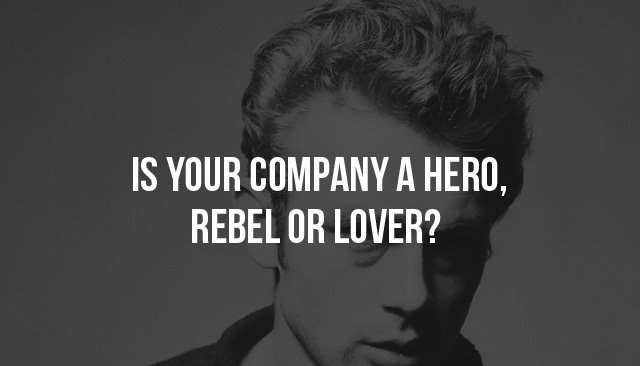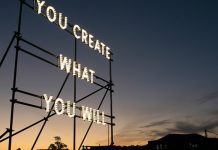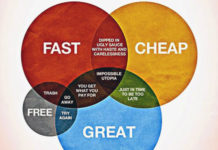There is an indescribable, alluring quality to the world’s most beloved brands.
We’re enamored with the sense of nostalgia that Coke inspires. Patagonia awakens the explorer and begs us to experience the natural world. Victoria’s Secret evokes the seductive lover when we buy sexy lingerie. Nike fuels greatness, and charity: water makes us want to donate our birthday money to help change lives.
To the casual consumer, the power that some brands hold seems like a mystery or stroke of luck. But there’s nothing unintentional about it. The force behind the world’s most influential brands is actually a science–an intentional positioning strategy grounded in years of psychological research.
When you find yourself loyal to your favorite brands and inspired by new ones, you’re subconsciously forging a connection with that brand’s archetype. A brand archetype is a personification of a brand on a human level. It borrows well-established character types throughout history, film and literature to define a brand’s underlying personality and character. Consider James Dean’s rebel spirit and Marilyn Monroe’s sensuality. Think Jack Kerouac’s “On the Road” and Charlie Chaplin’s jester-like shenanigans. Archetypes have long permeated the essence of who we are.
How Archetypes Influence Brands
Looking at a brand through the lens of archetypes can unleash powerful brand positioning. These narrative structures are so remarkable because they tap into specific core desires, drives, fears and motivations all humans have. Archetypes help us understand who a brand is and what it stands for. Especially for ‘me too’ categories and commodity businesses, archetypes reveal unique differentiators and meaning beyond what a company sells.
Swiss psychiatrist Carl Jung introduced archetypes more than half a century ago as universally understood characters that provide emotional prompts to fundamental human desires. Leadership consultant, speaker and author Dr. Carol Pearson has, in more recent years, continued to build out Jung’s work into a body of research that examines archetypal attributes within organizations that are part of a work culture and shared purpose.
Brand Archetypes Explored
Pearson’s research points out that in a business context, there are 12 individual brand archetypes. Each is associated with specific motivations, values, drivers and attributes.
The 12 archetypes are:
The Caregiver is moved by compassion, generosity and selflessness to help and serve others. Examples include Campbell’s, Johnson & Johnson and TOMS shoes.
The Every Person believes in the inherent worth and dignity of all–expecting very little from life but committed to teaching through empathy, realism and street smarts. Examples include Gap, Habitat for Humanity and Trader Joe’s.
The Hero is tough and courageous, overcomes tremendous obstacles and persists in difficult times. They are most fulfilled when they can rise to or overcome a challenge. Examples include Nike, Robert Irvine and the U.S. Army.
The Innocent is a spontaneous, trusting child who always sees the bright side of a situation and is able to maintain an optimistic, spontaneous, trusting outlook. Examples include Charmin, Avon and Hello Kitty.
The Explorer moves past the known to explore new, uncharted territories. When crowds go one way, explorers choose a completely different path, embracing the journey rather than the destination. Examples include The North Face, Subaru, and Starbucks.
The Rebel embodies rage about structures that no longer serve, even when these structures are supported by societies and our conscious choices. Rebels are rule breakers and catalysts for change. Examples include Harley Davidson, Virgin, and Diesel.
The Lover lives to experience pleasure, achieve intimacy and follow bliss. Examples include Victoria’s Secret, BMW and Godiva.
The Creator fosters imaginative endeavors, aiming to express and turn away from mediocrity. Examples include HGTV, Canon, and Lego.
The Jester lives to have a good time, making the most mundane experiences something fun. Examples include GEICO, Taco Bell, and Skittles.
The Sage seeks the truths that will set us free in seeing the world objectively and providing course-corrective solutions based on objective analysis of our actions and choices. Examples include CNN, Oprah, and The Wall Street Journal.
The Magician seeks out the fundamental laws of science and metaphysics to understand how to transform situations, influence people, and transform visions into reality. Examples include TED, Disney, and AXE.
The Ruler inspires us to take responsibility for our own lives in our society and in the world at large by creating environments that invite gifts and perspectives of all concerned. Examples include Rolex, Rolls Royce, and American Express.
Understanding Your Brand’s Archetype
Understanding which archetype your brand should live out will enable you to clearly define the role you want your brand to play in people’s lives and the story you want to tell about who you are and what you stand for. The process of discovering your archetypal connections will vary from company to company. For some brands, the experience will be instantaneous and highly intuitive. For others, the process of answering the question, ‘Are we the hero or the rebel?,’ is more grueling.
As humans, the fact is that we’re drawn to all of these archetypes, and we see a bit of ourselves expressed across multiple dimensions and personalities. The earlier on in your company’s journey that you can uncover your brand’s true identity–the character your brand is meant to live out–the sooner your team can begin living it and leaving a lasting impression in your audience’s minds, regardless of whether you’re running a small business or big company.
More often than not, you’re going to need help, so don’t be afraid to connect with someone on the outside, who can look upon your brand with the right balance of empathy, objectivity and truth. At Motto, we go through archetype exercises with our clients to help tell the brand’s story and uncover the essence, heart and emotion that can only happen through an exercise like this.
Defining your brand’s archetype is a journey that will lead you to inspiring places within your business and your brand.
This post originally appeared on Inc. under the title: Is Your Brand a Rebel, Lover or Hero?
Source : Sunny Bonnell (Co-founder at Motto | Leadership & Brand Consultant)


















